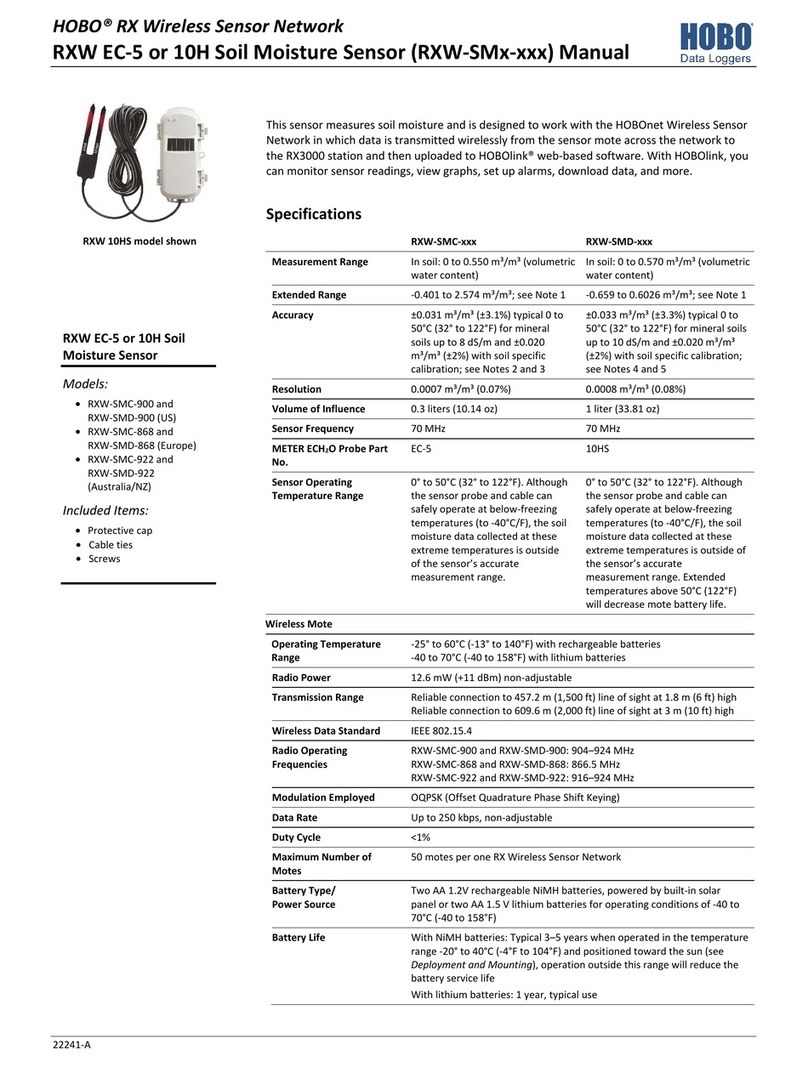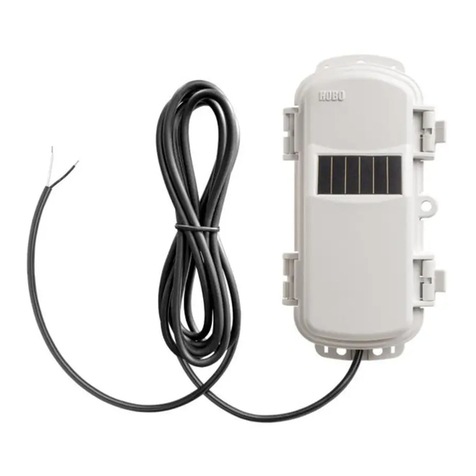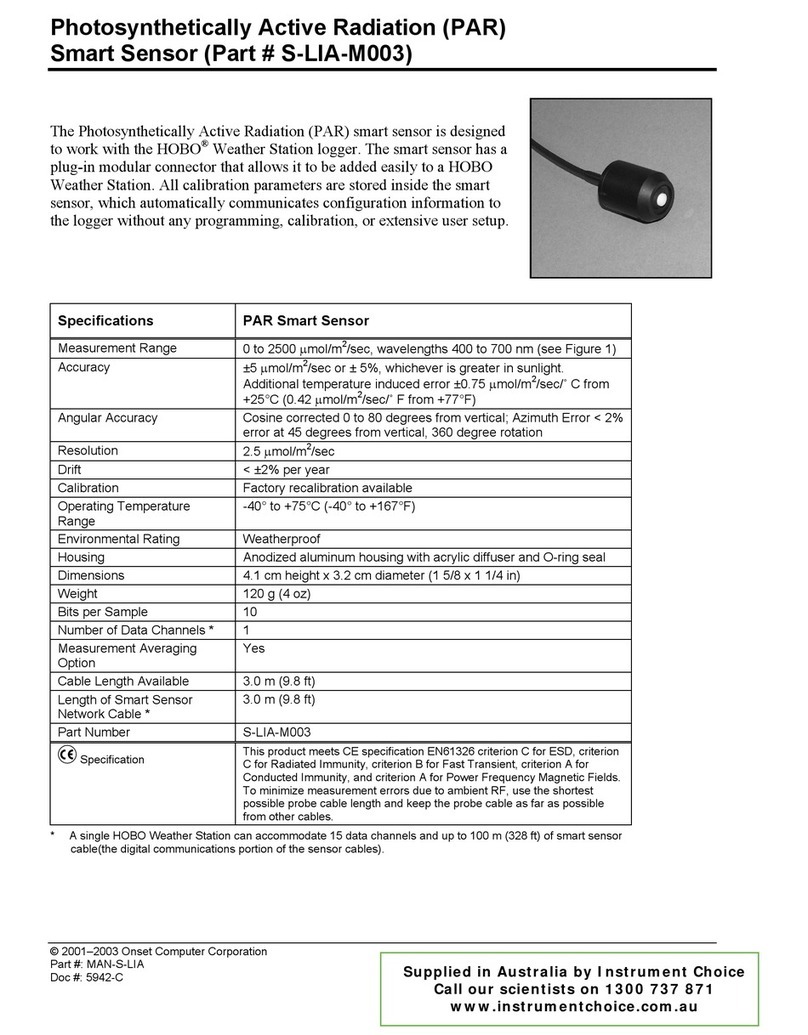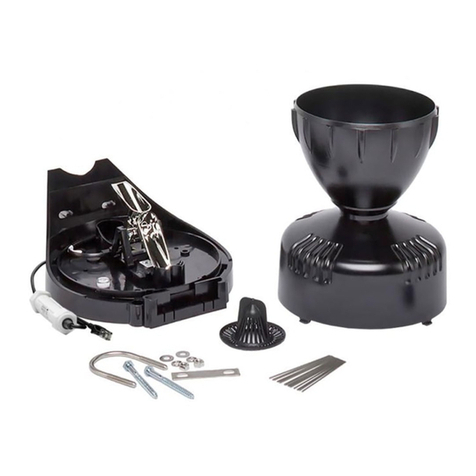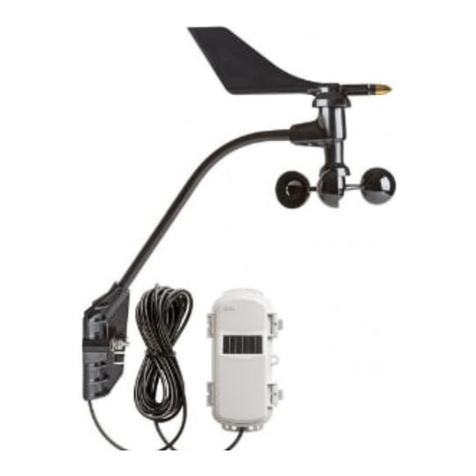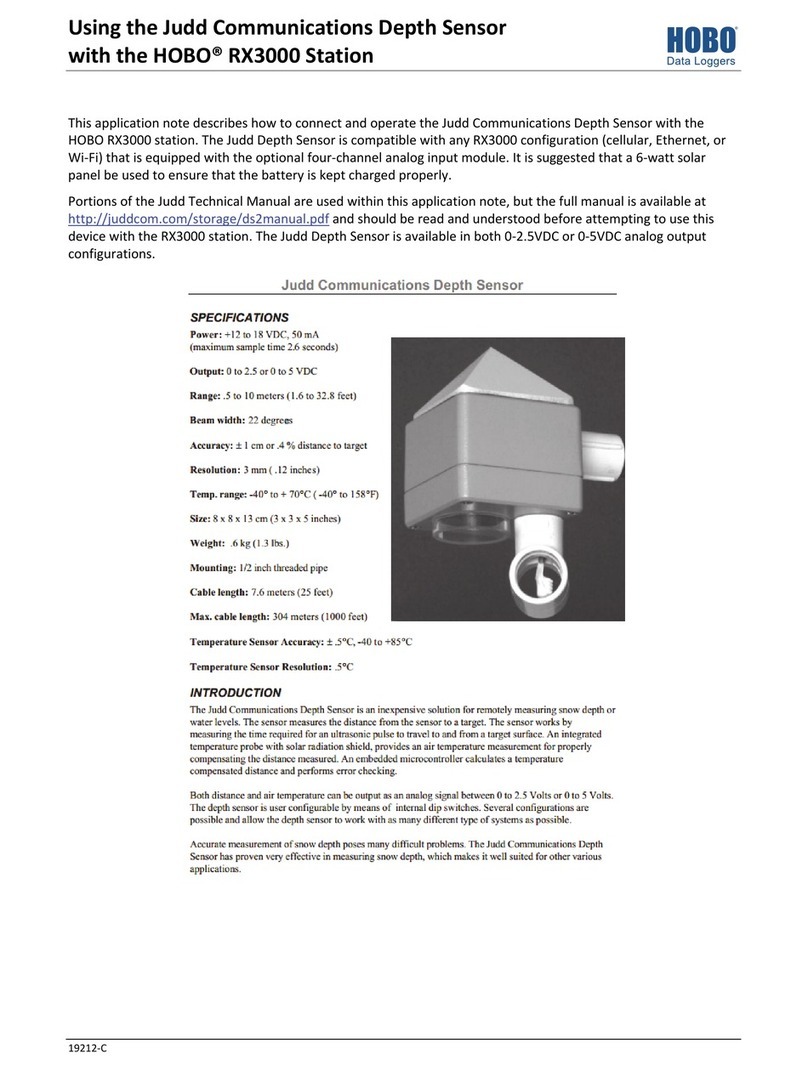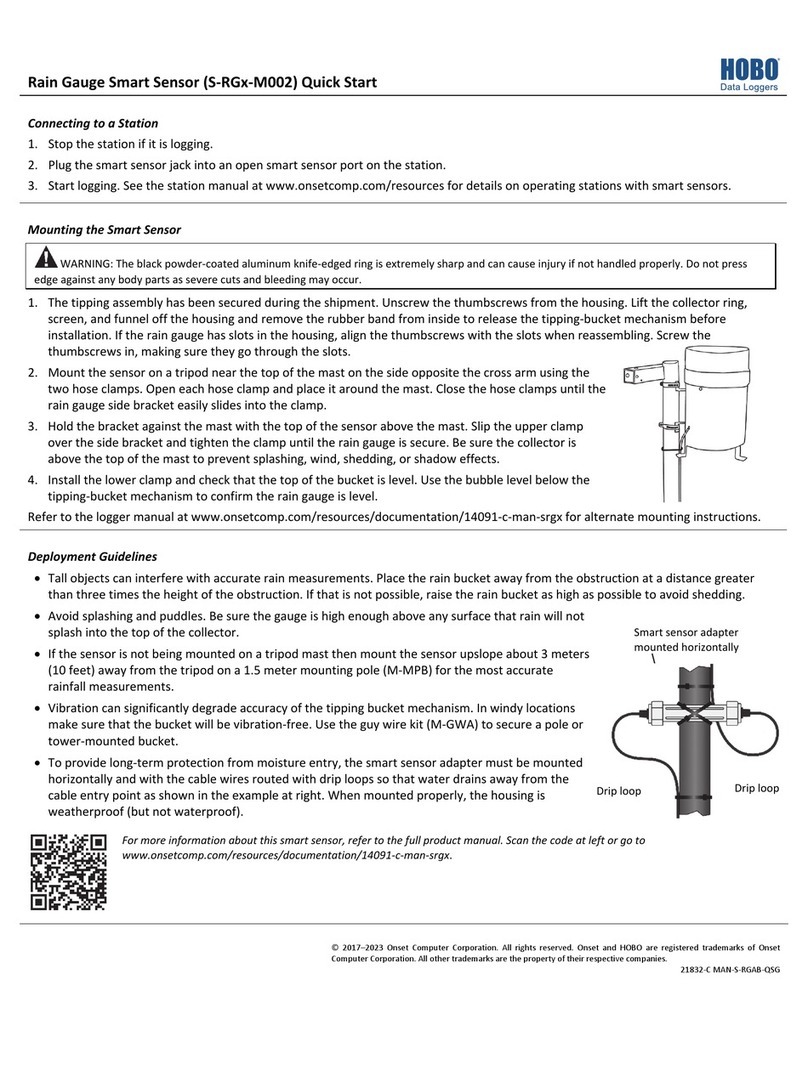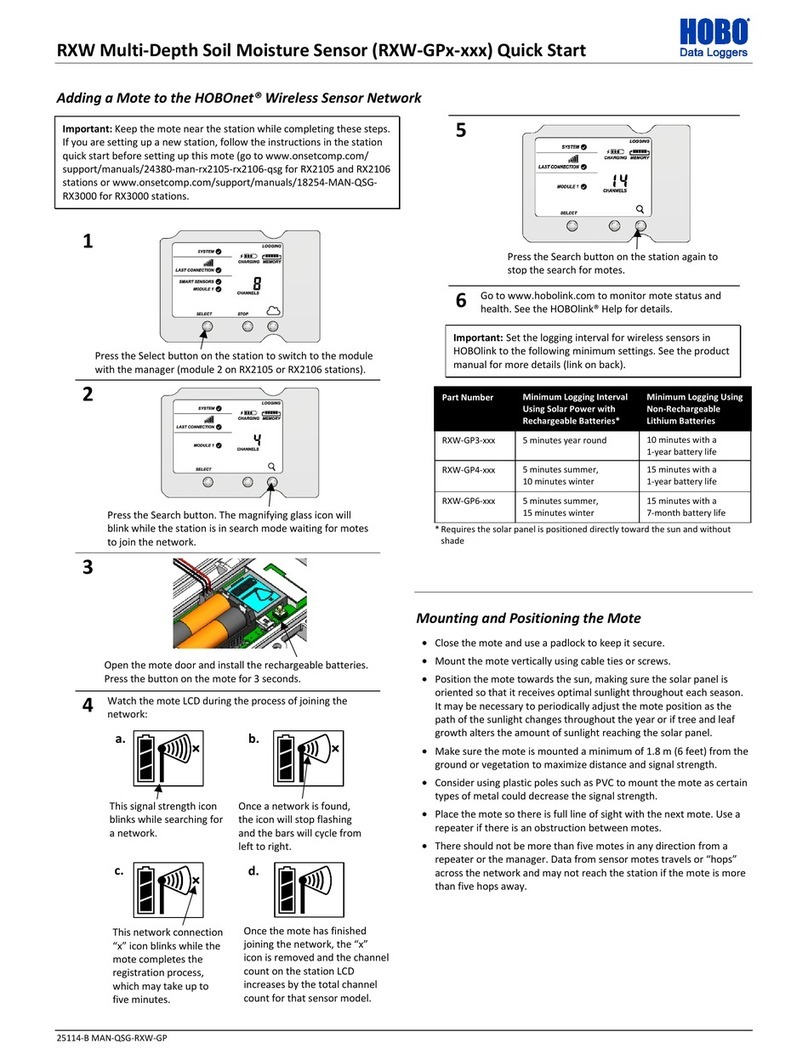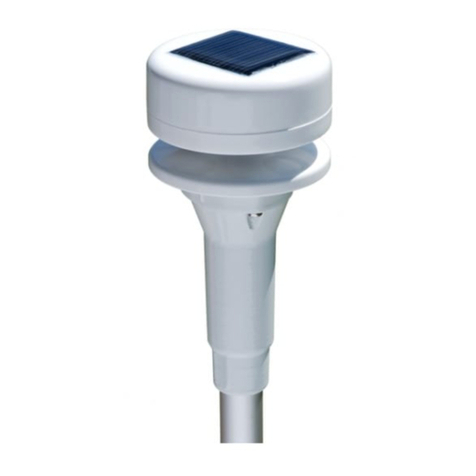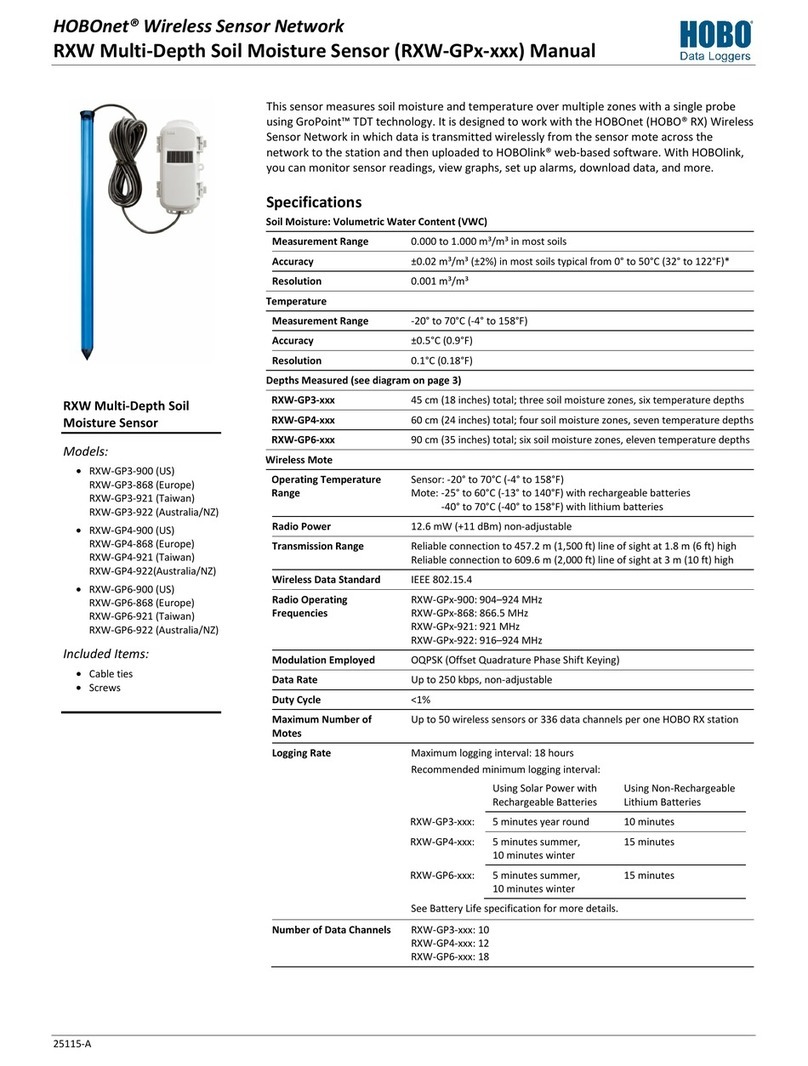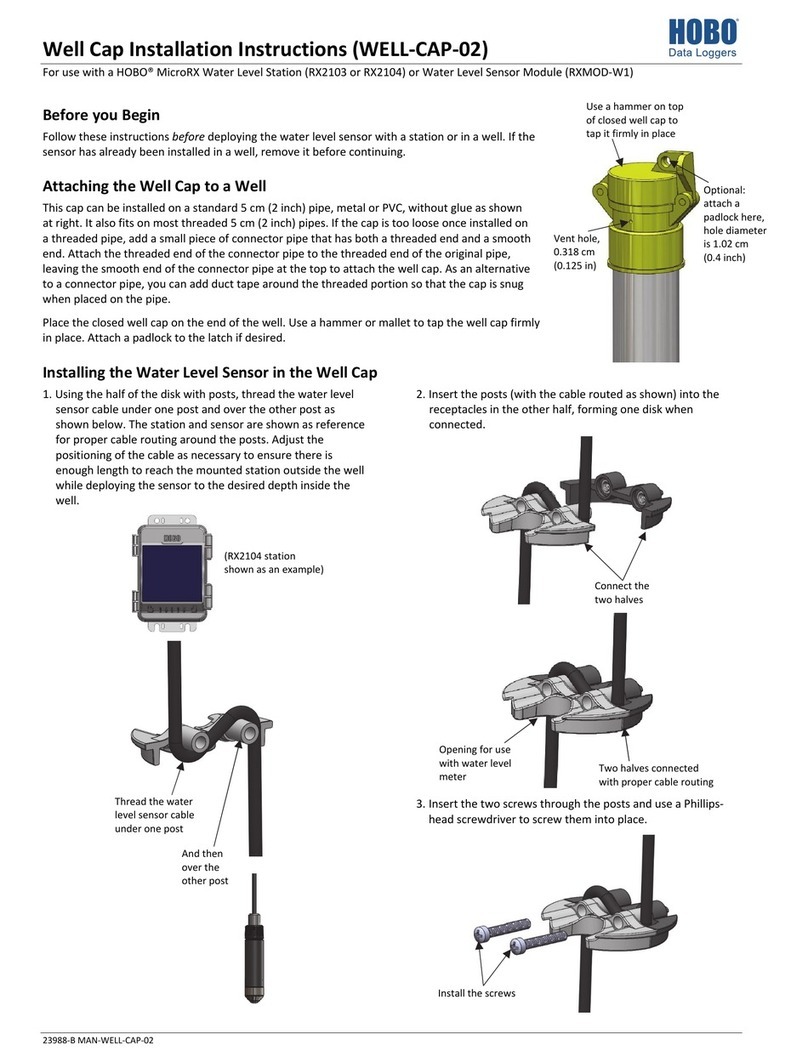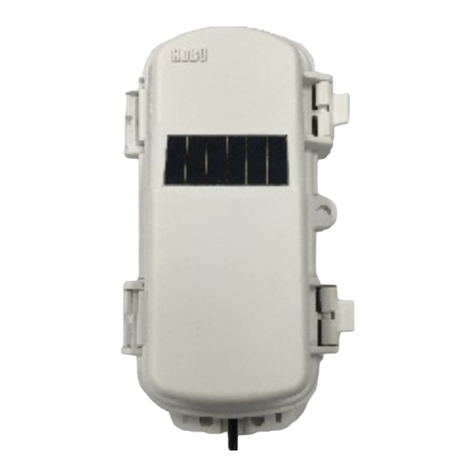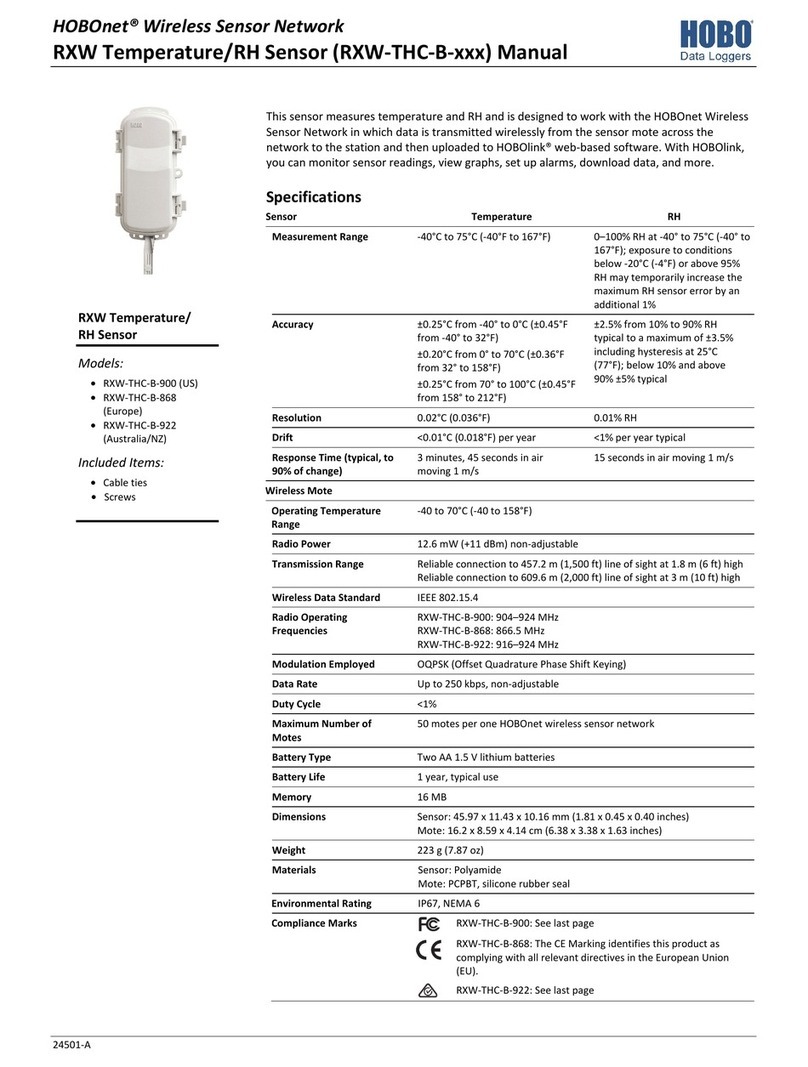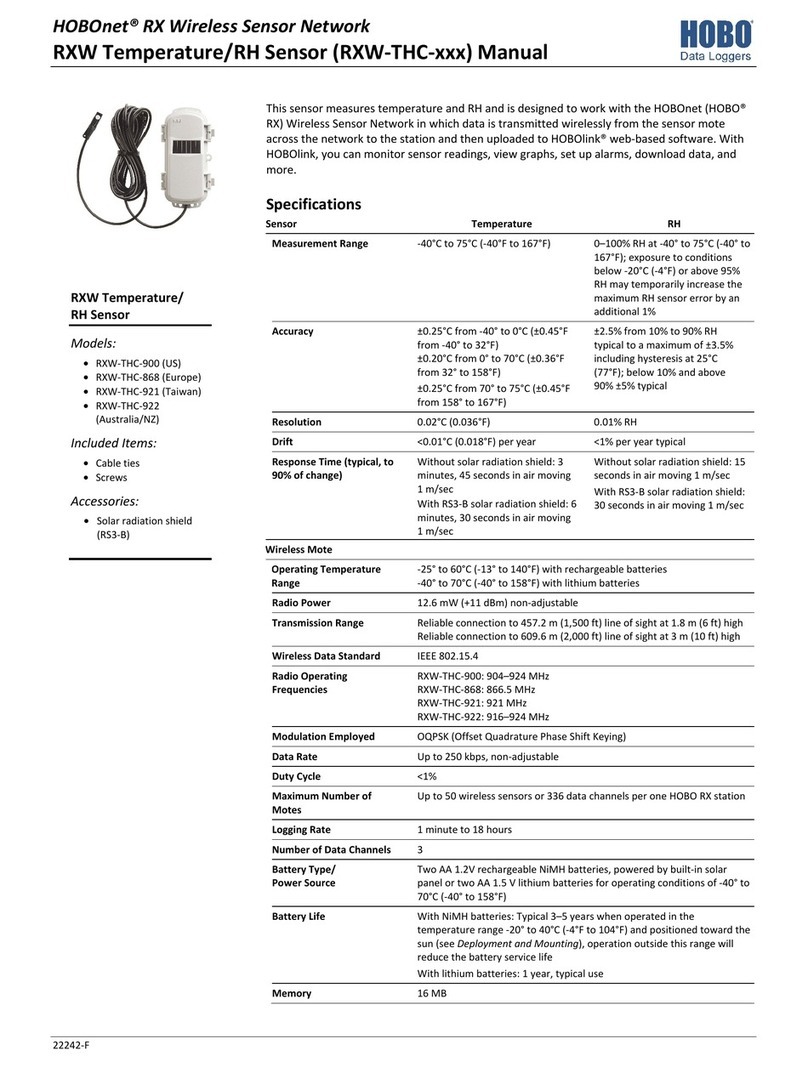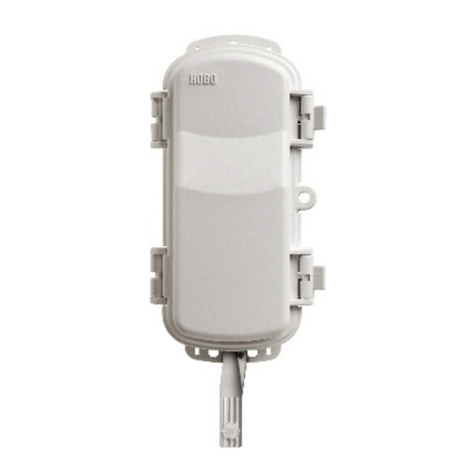
Rain Gauge Smart Sensor (S-RGC-M002 & S-RGD-M002) Manual
1-800-LOGGERS 4 www.onsetcomp.com
•Position the mote towards the sun, making sure the solar
panel is oriented so that it receives optimal sunlight
throughout each season. It may be necessary to
periodically adjust the mote position as the path of the
sunlight changes throughout the year or if tree and leaf
growth alters the amount of sunlight reaching the solar
panel.
•Make sure the mote door is closed, with both latches fully
locked to ensure a watertight seal.
•Consider using a 3/16 inch padlock to restrict access to the
mote. With the mote door closed, hook a padlock through
the eyelet on the right side of the door and lock it.
•To maximize the communication between motes, place
the mote within 304.8–457.2 m (1,000–1,500 feet) and full
line of sight with the next mote in the network and at least
1.8 m (6 feet) from the ground.
•If there is an obstruction between two sensor motes or
between the sensor mote and the RXW Manager, then use
an RXW Repeater (RXW-RPTR-xxx) mounted higher than
the two motes. For example, if there is a hill or mountain
between the sensor mote and the RXW Manager, place a
repeater at the top of the hill between the sensor mote
and the RXW Manager.
•There should not be more than five motes in any direction
from a repeater or the RXW Manager. Data logged by a
wireless sensor must travel or “hop” across the wireless
network from one mote to the next until it ultimately
reaches the RXW Manager at the RX3000 station. To make
sure the data can successfully travel across the network,
the sensor mote should not be more than five hops away
from a repeater or manager.
•The RX Wireless Sensor Network can support a maximum
of 50 motes.
•Use a #4-40 screw to attach a ground wire to the port on
the back of the mote if you are deploying the mote in a
location where lightning is a concern.
•Make sure the mote remains in a vertical position once it
is placed in its deployment location for optimal network
communications.
Sensor Mounting Guidelines
Use the following guidelines to determine the best location for
installing the sensor.
•You must mount the rain gauge sensor so that it is level. As
built-in bubble level is attached to the base to simplify this
process.
•Be sure there is an unobstructed path for water runoff
from the drain screens.
•The sensor contains a magnet-operated switch that may
not operate correctly if you mount the rain gauge on or
near any object that is attracted to a magnet.
•Exposure to winds can reduce the measured rainfall
amounts. Mount the sensor where there are no
obstructions of rainfall at low angles (such as trees,
houses, fences) and as low as possible out of the wind.
•If installing the sensor on a sheet metal roof, insulate the
unit by making a platform out of wood. Mount the base of
the rain gauge at least 4 cm (1 inch) away from any steel
or iron surface and make sure the reed switch is at least 4
cm (1 inch) away from any steel or iron objects (e.g. nails).
•For the most accurate rainfall measurements, it is
recommended that you mount the sensor upslope, about
3 meters (10 feet) away from the tripod, on a 1.5 meter
high mounting pole (M-MPB). Alternatively, you can
mount the sensor on the tripod mast.
•Tall objects can interfere with accurate rain measurements.
It is recommended that you place the rain bucket away
from the obstruction by a distance greater than three times
the height of the obstruction. If that is not possible, raise
the rain bucket as high as possible to avoid shedding.
•Avoid splashing and puddles. Be sure the gauge is high
enough above any surface that rain will not splash into the
top of the collector.
•Vibration can significantly degrade accuracy of the tipping
bucket mechanism. In windy locations make sure that the
bucket will be vibration-free. Consider using guy wires to
secure a pole or tower-mounted bucket.
Preparing the Sensor for Mounting
1. Remove the cone from the base by turning over the bucket.
Rotate the base counterclockwise until the latches on the
cone line up with the latch openings in the base, then lift
the base off the cone.
2. The tipping bucket on the base has been secured to avoid
possible damage to the assembly. Carefully cut and remove
the cable tie to release the bucket assembly.
Mounting the Sensor on a Wooden Post or Flat Surface
1. With a 5 mm (3/16 inch) drill bit, drill two holes
approximately 54 mm (2-1/8 inches) apart. Use the metal
backing plate as a guide when marking the holes and a
carpenter’s level to ensure the holes are level.
2. Insert the 1/4 inch x 3 inch lag screws through the metal
backing plate and the holes in the mounting base into the
post. Make sure the base is level by checking the built-in
bubble level.


